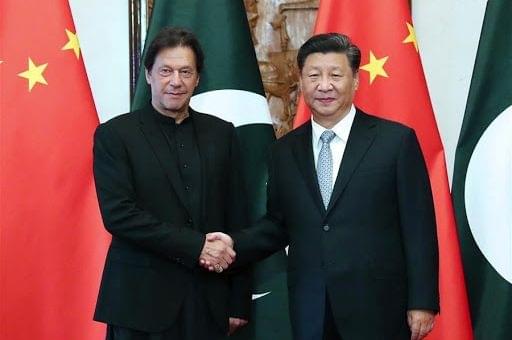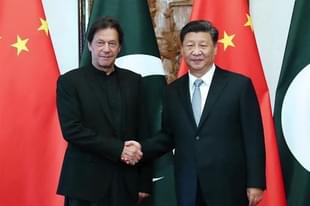Insta
Wary Of India's ‘Strategic Confidence’ Under PM Modi, China And Pakistan Focused On Protecting CPEC After Galwan Clash: Report
IANS
Jun 15, 2021, 07:21 PM | Updated 07:21 PM IST
Save & read from anywhere!
Bookmark stories for easy access on any device or the Swarajya app.


While the stand-off between India and China was at peak in the Galwan Valley, after a lethal but unarmed clash on June 15 last year, the wheels of diplomacy, and more, began to swiftly turn between Islamabad and Beijing.
The public response was muted from the Pakistani side but as an "All weather friend" of China, it was obvious that Pakistan would show its support for China--less overtly but more covertly.
This was evident in the statement by foreign Minister Shah Mahmoud Qureshi when he said that China cannot remain ignorant towards India's "illegal" construction of roads in Ladakh. Pakistan was obviously trying to cash in on the situation. It chose the line that its confrontation with China was another illustration that India was destabilizing the entire South Asian region.
Qureshi therefore flagged India's so-called aggressive behaviour towards its neighbours that could put regional peace and security at stake. The Prime Minister of Pakistan Imran Khan also criticised the Modi government and his "expansionist policies" while stating that India's aggressiveness is a threat to India's neighbours. India has border disputes with Nepal, China, and Pakistan and is being constantly threatened with false flag operations. Such continuous arrogant behaviour will not be tolerated, he said, while trying to drive a wedge between India and its South Asian neighbourhood, in its bid to undermine New Delhi's status as a rising regional power.
In slamming India post-Galwan, Khan was following up on his earlier steps of downgrading diplomatic ties with India by withdrawing its High Commissioner after India abrogated Article 370 in August 2019.
India-Pakistan ties were already going steeply south ahead of the Galwan incident. After abrogating Article 370 and Article 35A, India reasserted its claims over PoK and Gilgit-Baltistan in accordance with the February, 1994 Parliament resolution. The Survey of India's new map depicted Gilgit-Baltistan and Aksai China within the UT Ladakh boundary. Another move was the India Meteorological Department including areas in PoK and Gilgit-Baltistan in its daily weather forecasts, starting May 6 last year.
Post-Galwan, the future of the China-Pakistan Economic Corridor (CPEC) project under the Belt and Road Initiative blipped ever-more strongly on the China-Pakistan radar.
China-Pakistan Economic Corridor (CPEC), a multi-billion dollar project that serves as the flagship of China's Belt and Road Initiative (BRI), from the very outset. As CPEC passes through Pakistan Occupied Kashmir and Gilgit-Baltistan, both China and Pakistan have a joint interest in protecting the area that India energetically claims. China and Pakistan appear to have been worried that India under Prime Minister Narendra Modi has become strategically confident. The Doklam standoff, cross LoC surgical strikes, Balakot air strike, Operation All Out in Kashmir and the abrogation of Article 370, further gave rise to the perception of India's strategic confidence.
It is understood that the Chinese have conveyed their concerns over CPEC to its all-weather ally Pakistan as India has very strongly objected to Beijing exploiting the ecologically sensitive Gilgit-Baltistan area and PoK.
Last year, according to a US intelligence report, China had a much better understanding of Indian troop positions and movements ahead of the June 15 Galwan Valley clash in Ladakh, thanks to Pakistan.
Some analysts say that the revival of the ceasefire agreement between India and Pakistan, and the blow-hot blow-cold noises towards normalisation of India-Pak ties serve China's interests. Any breakthrough between India and Pakistan is likely to secure CPEC, China's too-big-to-fail flagship project under its BRI.
The story has been published via a syndicated feed, only the headline has been changed





